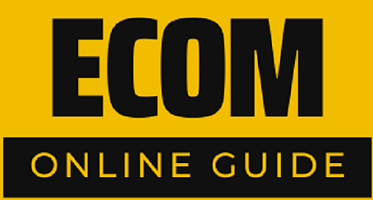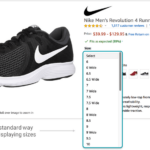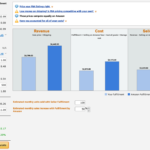In the ever-evolving landscape of e-commerce, Amazon’s FBA (Fulfillment by Amazon) program stands as a beacon for entrepreneurs seeking to capitalize on the vast potential of online retail. While the allure of selling on Amazon is undeniable, a well-crafted business plan is the linchpin to sustainable success. This comprehensive guide will unravel the intricacies of an Amazon FBA business plan, providing invaluable insights and a roadmap for entrepreneurs to navigate this dynamic marketplace.
I. Understanding the Essence of Amazon FBA

- What is Amazon FBA?
Amazon FBA is a service that allows sellers to store their products in Amazon’s fulfillment centers, from where the e-commerce giant picks, packs, and ships orders to customers. This streamlined process takes the logistical burden off sellers, enabling them to focus on scaling their businesses.
- Why Opt for Amazon FBA?
The benefits of opting for Amazon FBA are multifaceted. From leveraging Amazon’s vast customer base and Prime shipping to efficient order fulfillment and customer service, FBA empowers sellers to enhance their brand presence and customer satisfaction.
II. The Imperative Role of a Business Plan in FBA Success
A well-structured business plan is not just a formality. It’s the foundation upon which successful Amazon FBA ventures are built. It serves as a roadmap, guiding entrepreneurs through crucial decision-making processes and providing a strategic framework for growth.
The Components of an Effective FBA Business Plan
- Executive Summary: The succinct overview of your business, including its mission, vision, and Unique Selling Proposition (USP).
- Market Analysis: Understanding your target audience, analyzing market trends, and identifying potential risks and opportunities.
- Product Research and Selection: Niche identification, evaluating product demand, and selecting reliable suppliers.
- Competitor Analysis: SWOT analysis and differentiation strategies in a competitive landscape.
- Marketing and Sales Strategy: Creating a brand identity, implementing effective marketing channels, and optimizing the sales funnel.
- Operations Plan: Efficient inventory management, fulfillment processes, and customer service.
- Financial Projections: Crafting realistic sales forecasts, budget allocation, and profitability analysis.
- Risk Assessment: Identifying potential risks, developing mitigation strategies, and contingency planning.
III. Crafting the Executive Summary
The executive summary is the gateway to your business plan, offering a concise yet impactful introduction. It encapsulates the essence of your business, ensuring that potential investors and partners are immediately captivated.
Elements of an Effective Executive Summary
- Concise Business Description: Clearly articulate the nature of your business and its primary goals.
- Mission and Vision Statements: Define the purpose and long-term aspirations of your venture.
- Unique Selling Proposition (USP): Highlight what sets your business apart from the competition.
IV. Conducting a Thorough Market Analysis
- Identifying Your Target Audience
Understanding your target audience is pivotal for tailoring your products and marketing strategies. Dive deep into demographics, preferences, and purchasing behaviors to create a customer-centric approach.
- Analyzing Market Trends
Stay abreast of market trends to identify emerging opportunities and potential shifts in consumer behavior. This analysis enables you to adapt your business strategies to align with market demands.
- Assessing Potential Risks and Opportunities
Conducting a comprehensive risk assessment involves anticipating challenges and identifying growth opportunities. This foresight allows for product hunting strategic planning and risk mitigation.
V. Strategic Product Research and Selection
- Niche Identification
Choosing a niche is the foundation of successful product research. It involves finding a specialized segment within the market where your business can excel and meet specific consumer needs.
- Evaluating Product Demand
Utilize tools like Amazon’s Best Sellers list and third-party research tools to gauge the demand for potential products. This step is crucial for selecting products with a viable market.
- Supplier Selection
Establishing reliable supplier relationships is imperative for FBA’s success. Consider factors such as product quality, lead times, and communication when selecting suppliers.
VI. Amazon FBA Business Plan and Analyzing Competitors Effectively
- Identifying Key Competitors
Identify your main competitors within the Amazon marketplace and analyze their strategies. Understanding your competition is crucial for positioning your business strategically.
- SWOT Analysis
Conduct a SWOT analysis to identify your business’s strengths, weaknesses, opportunities, and threats. This analysis provides valuable insights for refining your business strategy.
- Differentiating Factors
Identify and leverage differentiating factors that set your business apart. Whether it’s unique product features, exceptional customer service, or innovative marketing, find ways to stand out in a competitive landscape.
VII. Formulating a Robust Marketing and Sales Strategy
- Creating a Brand Identity
Establishing a strong brand identity fosters customer loyalty and trust. Define your brand’s personality, values, and visual elements to create a memorable presence in the market.
- Implementing Effective Marketing Channels
Utilize a mix of marketing channels, including Amazon PPC, social media, and content marketing, to reach your target audience. Diversifying your marketing approach ensures broader visibility.
- Sales Funnel Optimization
Optimize your sales funnel to guide potential customers seamlessly from awareness to conversion. Implement strategies such as effective product listings, persuasive copy, and compelling visuals to enhance the customer journey.
VIII. Amazon FBA Business Plan Operational Excellence
- Efficient Inventory Management
Maintaining optimal inventory levels is crucial for avoiding stockouts or excess inventory. Leverage Amazon’s FBA tools to track inventory levels, forecast demand and streamline the replenishment process.
- Fulfillment Process
The core of Amazon FBA lies in efficient order fulfillment. Ensure that your products are packaged appropriately, and leverage Amazon’s advanced fulfillment network to meet customer expectations for quick and reliable shipping.
- Customer Service
Exceptional customer service is a cornerstone of FBA’s success. Respond promptly to customer inquiries, address issues proactively, and strive for a positive post-purchase experience to foster customer loyalty.
IX. Financial Projections for Sustainable Growth
- Sales Forecast
Crafting a realistic sales forecast involves analyzing historical data, market trends, and potential growth factors. This projection serves as a guide for budgeting and resource allocation.
- Budget Allocation
Allocate your budget strategically across various business aspects, including product sourcing, marketing, and operational expenses. A well-structured budget ensures efficient resource utilization.
- Profitability Analysis
Regularly analyze your business’s profitability by evaluating the cost of goods sold (COGS), operating expenses, and gross profit margins. This analysis provides insights into the financial health of your FBA venture.
X. Amazon FBA Business Plan Risk Assessment and Mitigation
- Identifying Potential Risks
Anticipate potential risks that could impact your business, including supply chain disruptions, changes in Amazon’s policies, or shifts in consumer behavior. A proactive approach allows for timely mitigation strategies.
- Developing Mitigation Strategies
Craft mitigation strategies for identified risks, outlining clear steps to address and overcome challenges. Preparedness is key to navigating unforeseen circumstances without significant disruption.
- Contingency Planning
Develop contingency plans to address critical scenarios that may disrupt normal business operations. Whether it’s a sudden surge in demand or unforeseen challenges in the supply chain, having contingency measures in place is essential.
XI. Crafting the Article
- Introduction: Unveiling the Power of an Amazon FBA Business Plan
In the vast expanse of Amazon’s marketplace, the key to unlocking success lies in a well-crafted business plan. This comprehensive guide delves into the intricacies of creating an effective Amazon FBA business plan, providing entrepreneurs with a roadmap to navigate the complexities of online retail.
- Key Components: Building Blocks of a Successful Plan
From the executive summary to risk assessment, each component plays a pivotal role in shaping a robust FBA business plan. Understanding these building blocks is essential for entrepreneurs looking to establish a thriving presence on Amazon.
- Executive Summary: The First Impression Matters
The executive summary serves as the initial handshake with potential investors or partners. This section explores the elements that make an executive summary compelling and impactful, setting the tone for the entire business plan.
- Market Analysis: Understanding the Landscape
A thorough market analysis is the cornerstone of informed decision-making. This segment covers the importance of identifying target audiences, analyzing market trends, and assessing potential risks and opportunities within the FBA landscape.
- Product Research: Choosing Your Winning Products
Niche identification, evaluating product demand, and selecting reliable suppliers are critical components of effective product research. Entrepreneurs learn how to curate a product lineup that aligns with market demands.
XIII. FAQs
A. What is the significance of an executive summary in an Amazon FBA business plan?
The executive summary serves as the first impression, offering a concise overview of the business, its mission, vision, and Unique Selling Proposition (USP).
B. How can I effectively conduct market analysis for my FBA business?
Effective market analysis involves understanding the target audience, analyzing trends, and assessing risks and opportunities to make informed decisions.
C. What are the key elements to consider in product research and selection?
Niche identification, evaluating product demand, and selecting reliable suppliers are crucial elements in effective product research for FBA businesses.
D. How do I differentiate my business in a competitive FBA market?
Differentiating factors, identified through a SWOT analysis, can include unique product features, exceptional customer service, or innovative marketing strategies.
E. What financial aspects should be included in my FBA business plan?
Financial aspects include realistic sales forecasts, budget allocation, and profitability analysis, providing a roadmap for sustainable growth.
XIV. Conclusion
In summary, embarking on the journey of an Amazon FBA business requires more than just listing products. A comprehensive business plan acts as a guiding force, enabling entrepreneurs to navigate the complexities of the FBA landscape with clarity and purpose. By understanding the key components, conducting thorough analyses, and preparing for potential challenges, entrepreneurs can unleash the full power of an Amazon FBA business plan, propelling their ventures toward sustained success.
















